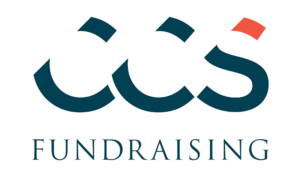Culture: It’s complicated.
“Culture” is ubiquitous, although that does not mean it is easy to define. Instead, “culture” presents a challenge when we try to change it without buy-in from essential stakeholders. Understanding that every organization has a particular culture, whether or not stakeholders acknowledge it, is crucial in formulating a fundraising strategy. Before describing an ideal “culture of philanthropy,” it may be helpful to refer to a few underlying assumptions about culture:
- All organizations have it
- It’s a powerful source of communication inside and outside of the organization
- It can be detrimental if not aligned with the well-being of the institution
- It can – and should – be measured [1]
It should be no surprise, then, that the first step towards developing a dynamic and successful advancement office is to articulate how philanthropy allows institutions to realize key tenets of culture that they bring into reality every day.
Developing a culture around philanthropy within an independent school, especially, is a little more complicated than merely speaking it into reality. Schools increasingly rely on the generosity of current and former students as well as their families, and can be especially at-risk for missed opportunities if they do not appeal to the collective values of these stakeholders. Advancement offices have also seen improvements in external fundraising when internal stakeholders, like faculty and staff, choose to participate.
Models for Understanding Philanthropy’s Role in Culture
Independent schools operate as complex, adaptive systems, and they must if they hope to respond to the critical needs of the communities they serve. [2] Culture and philanthropy’s role in these institutions can be equally as complicated, and the consequences of inconsonance can alienate and drive away existing and prospective supporters.
Thankfully, systems thinking approaches like the Vision, Mission, Capacity, and Learning (VMCL) model, championed by Drs. Derek and Laura Cabrera of the Cabrera Research Lab at Cornell University, make it easier to analyze, understand, and implement a culture of philanthropy.
The VMCL model suggests that culture is derived from these four functions:
- Vision: The vision is short, simple, inspiring, and measurable. It is a desired future state for your organization.
- Mission: The mission describes actions done repeatedly to realize the vision. Mission statements clearly state who does what for whom, and are clear, concise, measurable, and easily understood.
- Capacity: Capacity describes the critical systems essential to realizing vision and should be easily understood and measured.
- Learning: Learning is the continuous process that enhances an organization’s collective ability to accept, make sense of, and respond to internal and external change. [3]
Where VMCL helps us understand philanthropic culture, Cultural Moves Management [4] helps us change it. Shifting the way stakeholders perceive philanthropy and their role in it encourages detractors to become supporters.
Most of your organization’s supporters are considered cultural “adopters” and tend to be the largest sub-group of supporters. They are passionate, reliable, and motivated by external and internal factors. [5] A smaller group of your supporters are cultural “leaders,” who serve as visionaries and should be enlisted as cultural ambassadors. To continue their work in advocating the culture, cultural leaders in the organization should receive ongoing stewardship for their support. Adopters, alternatively, can be transitioned into cultural leaders through ongoing investment and incentives.
Detractors of your organization’s culture are most often “fence-sitters” – they tend to be passive, undecided, and skeptical. [6] Fence-sitters are waiting to see what’s going to happen, so you want to avoid rewarding this behavior. Instead, show them the benefits of joining and adopting the culture. Use assorted communications that demonstrate for fence-sitters that on the side of corporate culture is the right place to be. They will get rewards, have fun, gain a sense of purpose and belonging, and ultimately love what they’re doing.
A smaller group are “naysayers,” who are oppositional, misinformed, or combative. [7] Because they may have legitimate complaints, naysayers should have an opportunity to share grievances. Sometimes naysayers can even become cultural proponents, but other times, leaders may confront staunch opposition to change. In this instance, they should redirect the naysayers’ energy and avoid letting them set the agenda with their opposition.
Regardless of where your stakeholders fall in cultural moves management, it’s critical to give them each the time and support needed to legitimize their experience and foster a sense of buy-in for your institution’s success.
Cultural Moves Management and Avoiding Obstacles
The case of a 100-year-old military school serves as an example to better understand potential obstacles when creating a culture of philanthropy. One particular pitfall of the advancement team at this school was not spending enough energy engaging alumni, students, and families through social media. Cabrera and Cabrera say that the most successful organizations are the ones that can easily communicate their vision, internally and externally. Independent schools can facilitate organizational learning by exposing stakeholders to a diverse array of resources like social media and online videos. Twitter and Instagram helped the school create the capacity for cultural formulation by instantly sharing essential information and updates. Once senior leadership at the military school embraced the use of these mediums and conveyed a sense of urgency around their fundraising initiatives, they actively engaged more alumni to participate in their annual Day of Giving. Cultural inculcation occurred organically, as retweets, reposts, and likes were continuously monitored and measured for their impact.
The military school was also able to mitigate the mistake of developing an overly complicated mission statement that would only confuse its stakeholders. The goal of any mission statement should be to clearly and concisely explain the actions required to bring about the change action that the school is working towards. Verbose mission statements often have the opposite effect intended. If they are too long and unfocused, the reader will have difficulty walking away with a clear sense of the school’s most pressing needs. Instead, this school simply stated its most important mandates and quickly explained why they required immediate attention and resources. Simple. Clear. Concise.
Finally, a renewed commitment from the military school to celebrate every volunteer leader went a long way toward developing a compassionate culture of philanthropy. These cultural champions were lauded and served as examples for other alumni, parents, teachers, and community members as people willing to go the extra mile to ensure that all of the school’s fundraising initiatives were successful. Creating compelling incentives such as a “Joint Chief’s Circle” or asking an alumnus to consider moving from the “Captain’s Circle” to join the “Major’s Circle” was a creative way to showcase the school’s corps of donors. When these organizational leaders were properly recognized and heralded as visionaries, they were more likely to demonstrate repeated buy-in and open new doors to engage the community in every philanthropic endeavor.
Changing Culture: The Value of Buy-In
Another example is a small independent school in Virginia where kids with ADD, ADHD, dyslexia, dysgraphia, dyscalculia, and other differences have discovered a love for learning since the early 1970s. The vision of the school is to build a community where all students, regardless of learning differences, can realize their full potential, and their mission to provide multisensory education for each individual’s academic and social achievement is nurtured by faculty and staff every day.
Philanthropy, however, was not as easily adopted. Giving to previous annual fund campaigns fell flat, with only 20% of faculty and staff giving at any point in the school’s history. While teaching methodologies and technologies employed at the school have changed, the home that they have built in a re-purposed church has remained the same for several decades. Many of the school’s faculty and staff would be classified as “fence-sitters” when it came to a culture of philanthropy: teaching in outdated classrooms with noisy air-conditioning equipment, they were skeptical and didn’t see the value of their gift.
With new leadership and a five-year-old development department, the school decided to embark on its first-ever capital campaign to enhance and expand the campus. While philanthropic outreach is blossoming among a variety of stakeholders, faculty and staff participation presented a unique challenge for the school.
Knowing how valuable faculty and staff participation is to a capital campaign, development leaders set out to change the perspectives of their colleagues. They started by renovating two model classrooms to serve as examples for the future and then organized cultural “leaders” from the faculty to serve as volunteers for the campaign.
Most importantly, the campaign was about meeting a participation goal, not a dollar amount. This aligned with the school’s collaborative values, and the campaign’s elements spoke to the needs of faculty and staff and their students.
Early “adopters” of the capital campaign were rewarded with fun incentives for participating: the Head of School hand-delivered morning beverages, participants enjoyed a special adult-only lunch, and teachers were given a flexible hour for joining the effort. “Fence-sitters” – and possibly a few quiet “naysayers” – witnessed the shift happening among their colleagues and began to reconsider their own attitude towards philanthropy.
By the end of the campaign period, 100% of staff participated, demonstrating unprecedented endorsement towards the capital campaign.
Key Takeaways
The objective of cultural moves management is to encourage detractors to become supporters. From the real-world successes and challenges of these two independent schools, we identify important takeaways to align primary and secondary academic culture with philanthropy:
- Philanthropy must be rooted in the organizational culture to resonate with donors.
- Leadership sets the foundation for a positive overall and philanthropic culture.
- Values must be communicated early and often to students, parents, and members of faculty, administration, staff, and teachers.
- Measuring desired outcomes, like participation or elevated giving, will strengthen perceptions of culture.
So, how strong is your culture?
One simple test is to ask your essential stakeholders what your mission statement is. If they cannot recall, then it might be time to revisit how your school communicates its strategic vision. When your stakeholders can recite your mission without hesitation, that is a good indication that your organization is well on its way toward developing a culture of philanthropy, thus empowering your school to mold the leaders of tomorrow.
CCS Fundraising is a strategic consulting firm that partners with nonprofits for transformational change. To access our full suite of perspectives, publications, and reports, visit our insights page.
[1] Cabrera, Derek, and Laura Cabrera. Flock Not Clock: Design, Align, and Lead to Achieve Your Vision, Plectica LLC, May 29, 2018. Print.
[2] Ibid.
[3] Ibid.
[4] Think Water. (2015). VMCL: Build an Adaptive Organization. Retrieved from: https://fyi.uwex.edu/programdevelopment/files/2016/03/VMCL-Guide.pdf
[5] Cabrera, Derek, and Laura Cabrera. Flock Not Clock: Design, Align, and Lead to Achieve Your Vision, Plectica LLC, May 29, 2018. Print.
[6] Ibid
[7] Ibid

